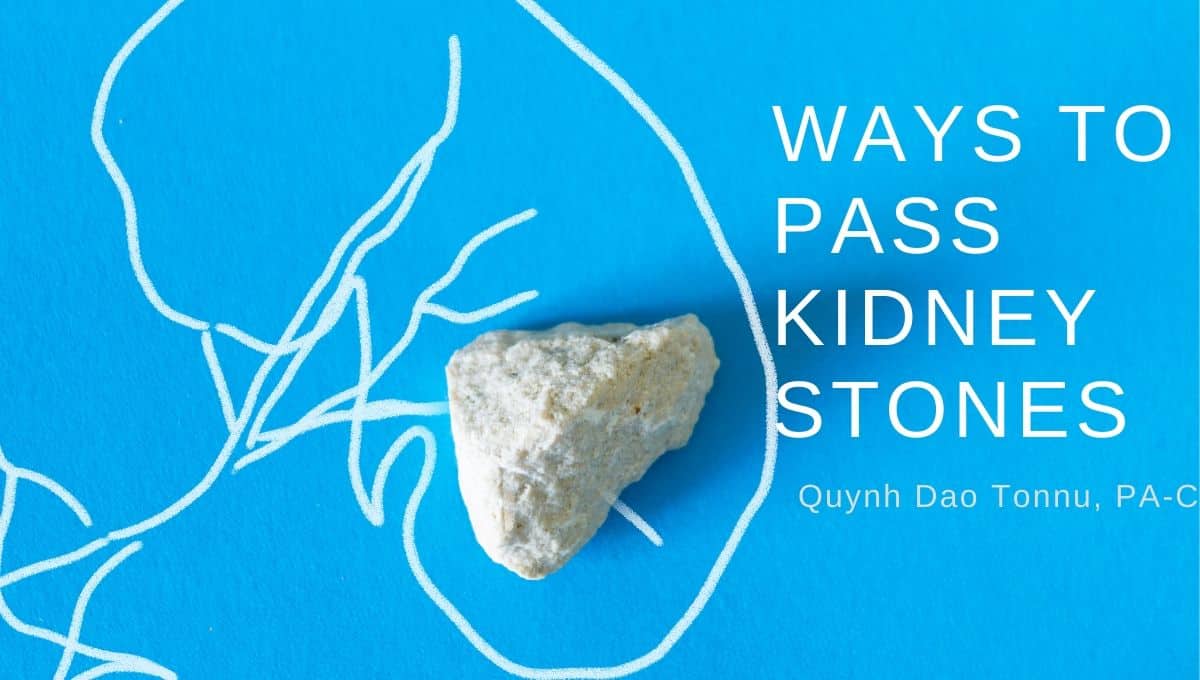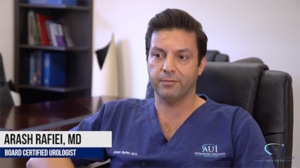I am Dr. Jonathan Jay, a board certified urologist with Advanced Urology Institute. While I am board certified in general urology, I also did fellowship in female urology, voiding dysfunction and pelvic floor dysfunction.
 One of the inevitable consequences of aging in women is urinary problems. With increasing age, the pelvic floor muscles—a group of muscles that support the bladder, vagina and rectum—face the risk of damage. Since these muscles need to relax in order to pass urine well or have smooth bowel movement, their disruption may result in urinary problems, such as incontinence, overactive bladder, pelvic organ prolapse or pelvic floor dysfunction. Tension in these muscles may also lead to pain during sexual intercourse, painful or frequent urination and lower back pain.
One of the inevitable consequences of aging in women is urinary problems. With increasing age, the pelvic floor muscles—a group of muscles that support the bladder, vagina and rectum—face the risk of damage. Since these muscles need to relax in order to pass urine well or have smooth bowel movement, their disruption may result in urinary problems, such as incontinence, overactive bladder, pelvic organ prolapse or pelvic floor dysfunction. Tension in these muscles may also lead to pain during sexual intercourse, painful or frequent urination and lower back pain.
Aging and urinary problems
As women age, they may develop and overactive bladder, which means they urinate at all hours and with little warning. Many women suffer from incontinence after childbirth, a condition characterized by unintentional leakage of urine when coughing, sneezing, laughing or jumping. Childbirth may also cause injury to the pelvic floor muscles leading to weak spots in the walls and muscles of the vagina when adjacent organs move from their normal positions resulting in pelvic organ prolapse.
Informed decision-making
Unlike other specialties, such as neurology and oncology, urology offers a range of treatments that deliver great results for these conditions. Actually, most patients do get better after intervention by a urologist.
In fact, one of the reasons I chose this profession is that there are so many ways to help rectify problems and restore normalcy to people’s lives. As a urologist, I get the opportunity to care for patients in their declining years when urologic problems are so common. I care about both their medical and emotional challenges.
As urologists, we have the ability to find your problem when you present with symptoms. Once the problem is identified, we educate you on what you need to do and talk with you about the different treatment options available. I like counseling patients; talking to them about the bigger picture and helping them make informed decisions.
And as we define these problems, educate patients and talk about the different treatment options available, especially the positives and negatives, we help our patients to make choices that they are comfortable with. Still, because we understand that these choices have risks, we ensure that we provide enough information to minimize the risks.
Most urinary problems are not life-threatening, but are quality of life issues. That means that by resolving them, we restore confidence, meaning and hope into our patients’ lives.
What does the treatment involve?
When we make choices for treating urinary problems, we prioritize the least invasive procedures in order to minimize the risks. Typical treatment begins with a physical examination and evaluation followed by a discussion of options such as physical and behavioral therapies–including exercises to build strength in pelvic floor muscles–and reducing water, alcohol and caffeine intake.
As an option for treating overactive bladder, we may recommend nerve therapy, a procedure which involves placing a needle in the ankle to transmit electric stimulation to the nerves that control bladder function. We may also recommend more invasive options for overactive bladder such as Botox injections and an implantable bladder pacemaker.
Depending on the symptoms, we may choose to manage pelvic organ prolapse using silicon or rubber diaphragm called a pessary, which is inserted into the vagina to support the pelvic floor. We may also recommend vaginal medications or muscle injections to help with pelvic floor dysfunction. But if the problem persists or worsens even with these interventions, we may explore surgery as a last resort.
Remarkable outcomes
In urology, we are fortunate that most of the problems are clearly defined, the treatment path is clear, and the results are usually good. At Advanced Urology Institute, we offer everything, from observation, pessaries and medications to surgery. Fortunately, most of our patients do well and get better after we apply minimally invasive procedures.
We understand that many women with urological problems might not know how common and treatable these problems are—a fact that keeps them from seeking proper care. So at AUI, we try to provide information to the public so that people are aware that there are solutions for even the most awkward and uncomfortable urinary problems. For more information on female urology conditions and their treatment, visit the Advanced Urology Institute website.
TRANSCRIPTION:
I’m Jonathan Jay, I’m a board certified urologist with Advanced Urology Institute.
I’m a board certified general urologist, but I also did a fellowship in female urology and voiding dysfunction and pelvic floor reconstruction.
As women age, one of the advantages of aging is that the parts that allow them to hold urine in place and allow their bladders to be supported within the pelvis are at risk of being damaged. So hysterectomy can damage that support and those mechanisms that allow them to be continent, so can child birthing. So again, some of the advantages of womanhood predispose to some of these problems which makes it a very common problem.
And so one of the reasons I chose to be in Naples, Florida after doing that fellowship is that I knew there would be a lot of those problems to be able to rectify and treat here. And so we have the ability again to define the problem for the patient, to educate them on what they have and what their options are. These are not life threatening problems, but they’re quality of life issues and they’re major quality of life issues. And so the choices that the patients make are not one that I make, but it’s one that they make and they’re comfortable with.
For instance, we first define the problem, educate the patient, then we talk about the different options that are available and we talk about the positive and negatives of each of those options and the patient then chooses what they want to do. The outcomes are good. Remember, we’re not doing anything that the patient doesn’t want to assume the risk for.
We offer everything from observation to pessaries, say if you have prolapse, to medications if you have incontinence. We try all the benign things first and then we work our way up to surgical procedures if they have to be bothered enough to want to pursue that.
References:
 One of the biggest benefits of immunotherapy is its less severe side effects. Chemotherapy is known for its harsh side effects that can be devastating to patients. Side effects such as severe fatigue, hair loss, nausea and vomiting diminish quality of life for cancer patients. While immunotherapy is not without its side effects, most patients find that muscle aches, shortness of breath and headaches are easier to endure.
One of the biggest benefits of immunotherapy is its less severe side effects. Chemotherapy is known for its harsh side effects that can be devastating to patients. Side effects such as severe fatigue, hair loss, nausea and vomiting diminish quality of life for cancer patients. While immunotherapy is not without its side effects, most patients find that muscle aches, shortness of breath and headaches are easier to endure.



 These
These 
 This focused biopsy is called a
This focused biopsy is called a 
 Apart from occurring frequently among the elderly, ED is often a consequence of poor emotional and physical health. It is common in men with high cholesterol, diabetes, obesity, cardiovascular disease, hypertension, prostate disease, anxiety, damage from surgery or cancer, injuries, stress, depression, performance anxiety, relationship problems, alcohol use, smoking, and drug use. Typically, ED is caused by vascular disease (such as atherosclerosis) that prevents blood supply to the penis, a neurological disorder (like multiple sclerosis) that cuts transmission of nerve impulses to the penis, chronic medical disorders such as Peyronie’s disease, stroke and diabetes, trauma, and operations for bladder, colon and prostate cancer which may affect blood supply to the penis. These risk factors may work singly or in combination.
Apart from occurring frequently among the elderly, ED is often a consequence of poor emotional and physical health. It is common in men with high cholesterol, diabetes, obesity, cardiovascular disease, hypertension, prostate disease, anxiety, damage from surgery or cancer, injuries, stress, depression, performance anxiety, relationship problems, alcohol use, smoking, and drug use. Typically, ED is caused by vascular disease (such as atherosclerosis) that prevents blood supply to the penis, a neurological disorder (like multiple sclerosis) that cuts transmission of nerve impulses to the penis, chronic medical disorders such as Peyronie’s disease, stroke and diabetes, trauma, and operations for bladder, colon and prostate cancer which may affect blood supply to the penis. These risk factors may work singly or in combination.
 A vasectomy is an outpatient procedure that must be performed in a medical facility or in a doctor’s office. In one technique,
A vasectomy is an outpatient procedure that must be performed in a medical facility or in a doctor’s office. In one technique, 
 Low-T is diagnosed by measuring the quantity of testosterone in the blood. To clearly assess the level of testosterone,
Low-T is diagnosed by measuring the quantity of testosterone in the blood. To clearly assess the level of testosterone, 
 One of the inevitable consequences of aging in women is urinary problems. With increasing age, the pelvic floor muscles—a group of muscles that support
One of the inevitable consequences of aging in women is urinary problems. With increasing age, the pelvic floor muscles—a group of muscles that support 
 Finding the best way to help a patient to pass a kidney stone depends on several factors. Not all patients are the same, and the size and difficulty of their kidney stones vary as well. If the stones are smaller than 5 millimeters, the urologist will want the patient to try and pass them naturally. This is the least invasive way to pass
Finding the best way to help a patient to pass a kidney stone depends on several factors. Not all patients are the same, and the size and difficulty of their kidney stones vary as well. If the stones are smaller than 5 millimeters, the urologist will want the patient to try and pass them naturally. This is the least invasive way to pass 
 However, for some people, these methods are not enough to ensure they can live a healthy, fulfilling life. In these situations, surgical intervention is an option to correct overactive bladder problems.
However, for some people, these methods are not enough to ensure they can live a healthy, fulfilling life. In these situations, surgical intervention is an option to correct overactive bladder problems.
 Urologists will consider their patient’s health, age, and the type cancer when deciding how to proceed. For some cases, the best treatment is none at all. When a patient has
Urologists will consider their patient’s health, age, and the type cancer when deciding how to proceed. For some cases, the best treatment is none at all. When a patient has 
 For most men, the symptoms of an enlarging prostate include the slowing of their urine stream, pushing to urinate, and having to go to the bathroom frequently. Many men also have the feeling of not fully emptying their bladder after urination. In many cases, men will find that they need to wake up multiple times in the night to go to the bathroom.
For most men, the symptoms of an enlarging prostate include the slowing of their urine stream, pushing to urinate, and having to go to the bathroom frequently. Many men also have the feeling of not fully emptying their bladder after urination. In many cases, men will find that they need to wake up multiple times in the night to go to the bathroom.
 For urologists like
For urologists like 
 Urologists can usually diagnose
Urologists can usually diagnose 
 A urinary tract infection is an infection of a part of the urinary system which includes the bladder, kidneys, ureters and urethra. A UTI can occur when bacteria enters the urinary system, usually via the urethra.
A urinary tract infection is an infection of a part of the urinary system which includes the bladder, kidneys, ureters and urethra. A UTI can occur when bacteria enters the urinary system, usually via the urethra. 
 A urologist is a doctor who specializes in the urinary tract and male reproductive system. They are the doctor a patient will most likely to go to about his ED. Urologists see countless cases of ED on a regular basis, and to them it is not a major issue at all. However, good urologists understand that ED can be an embarrassing issue for their patients and they immediately begin their visits by creating a comfortable environment where doctor and patient feel at ease discussing it.
A urologist is a doctor who specializes in the urinary tract and male reproductive system. They are the doctor a patient will most likely to go to about his ED. Urologists see countless cases of ED on a regular basis, and to them it is not a major issue at all. However, good urologists understand that ED can be an embarrassing issue for their patients and they immediately begin their visits by creating a comfortable environment where doctor and patient feel at ease discussing it.